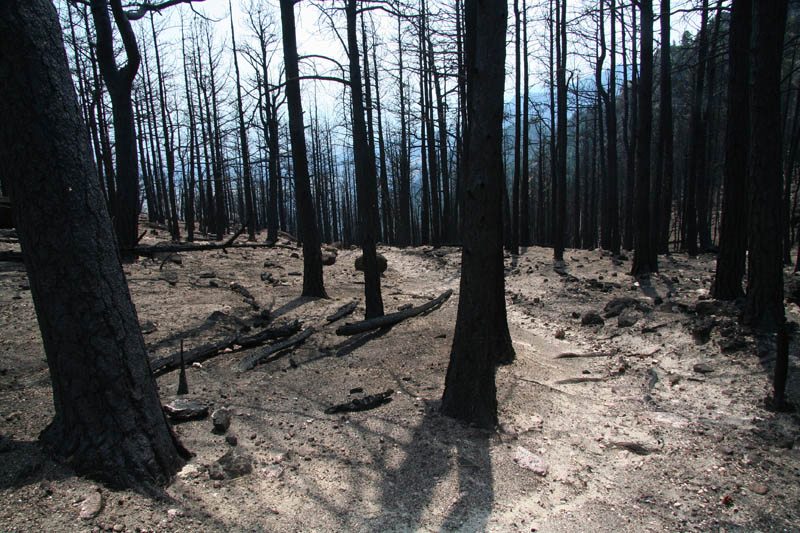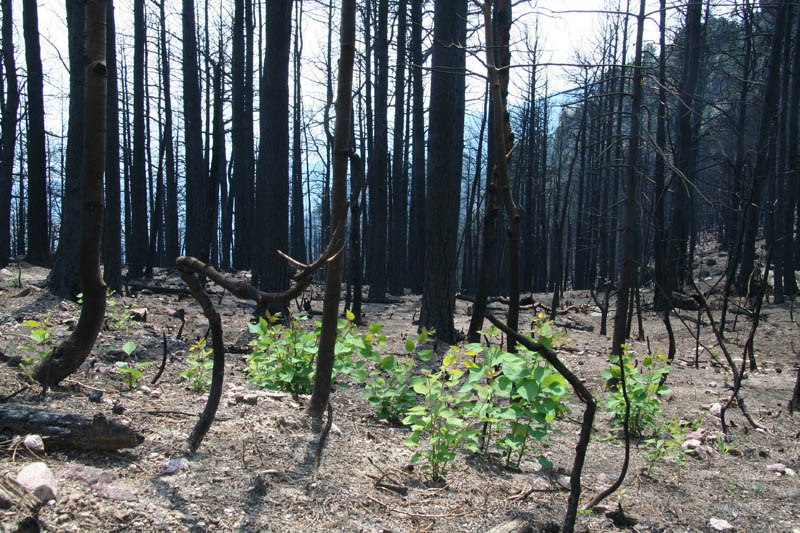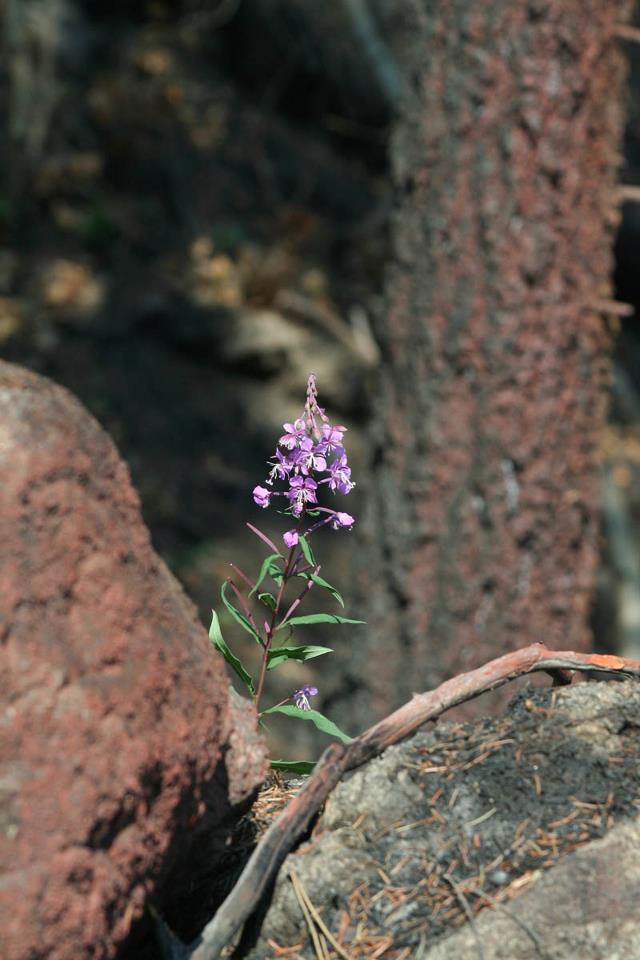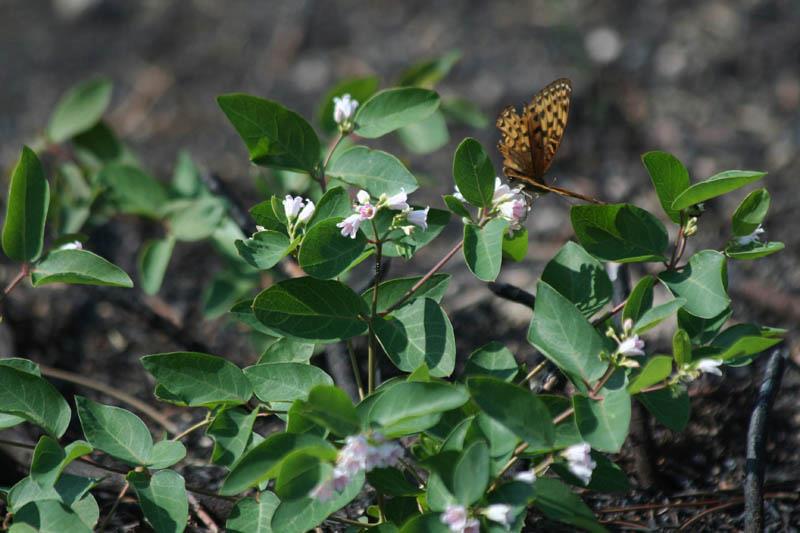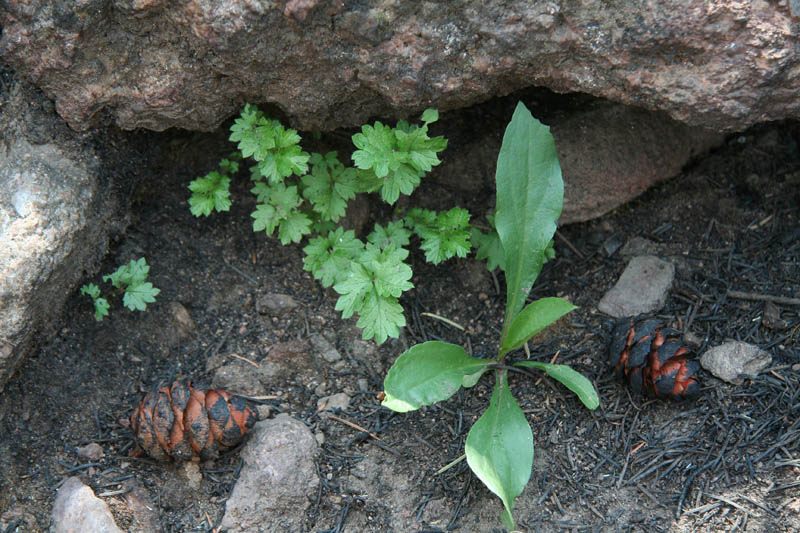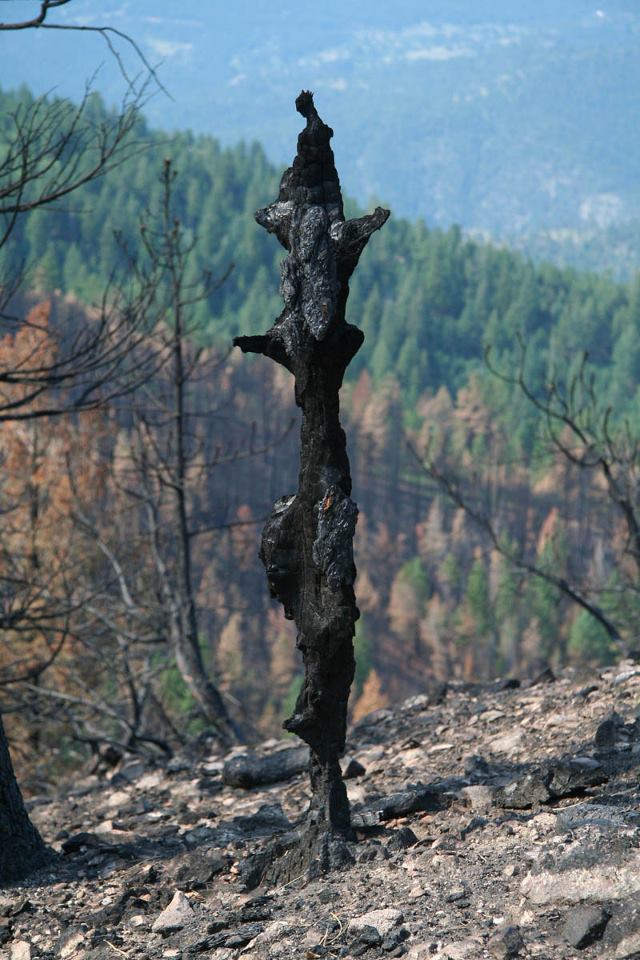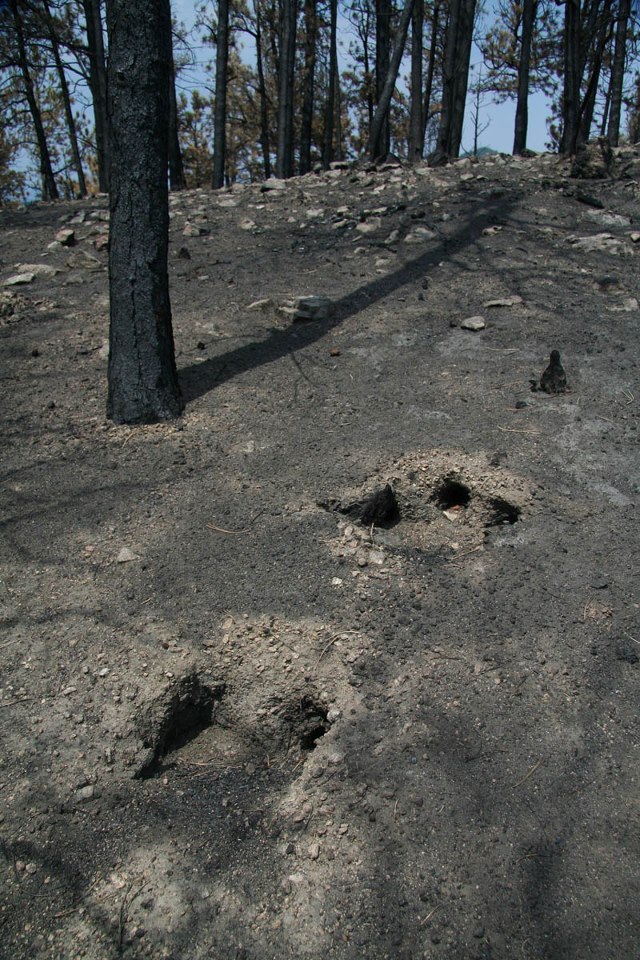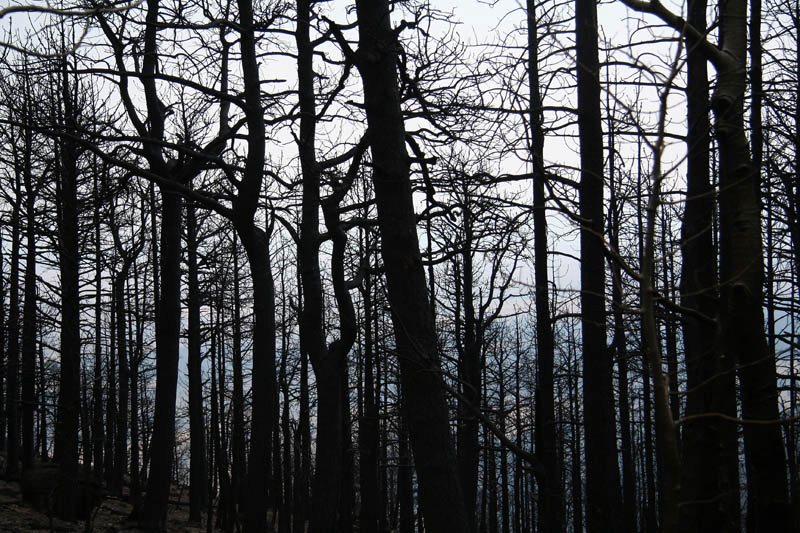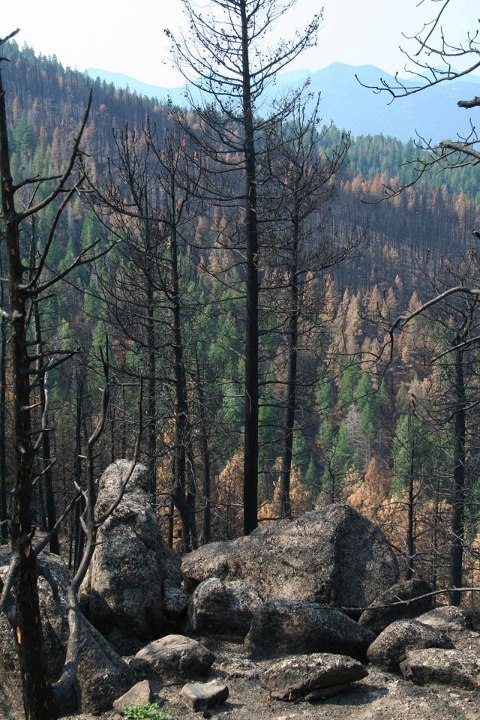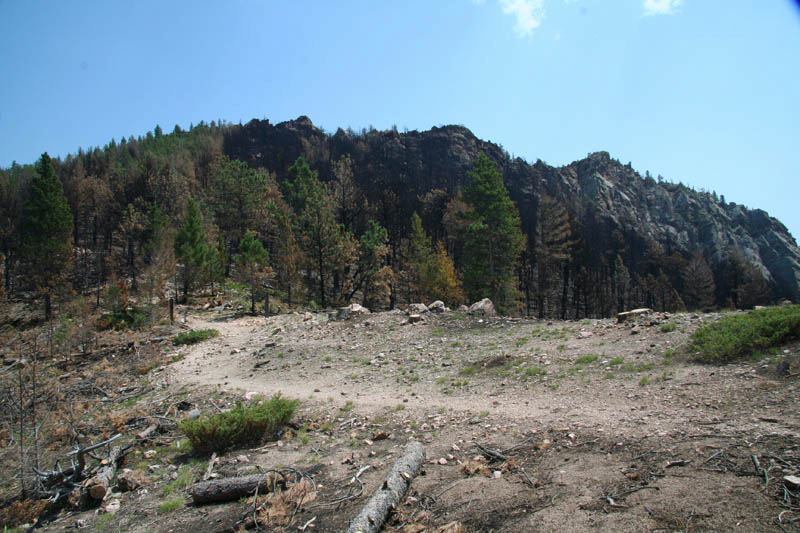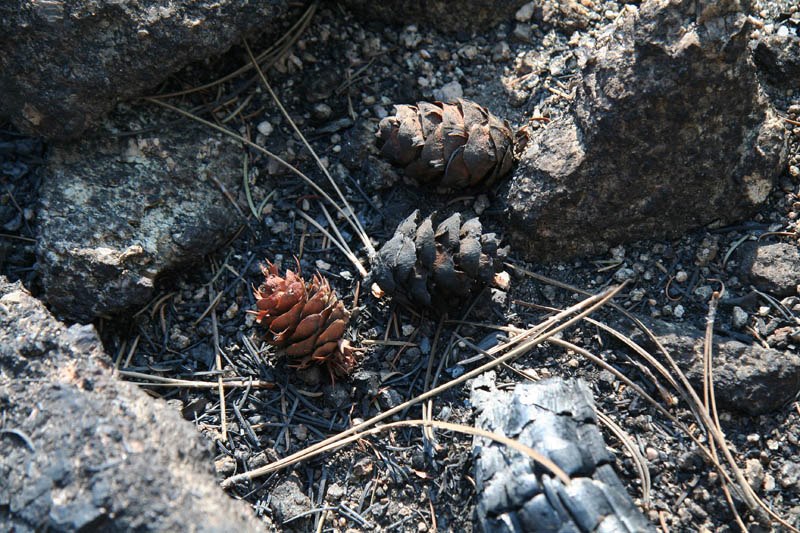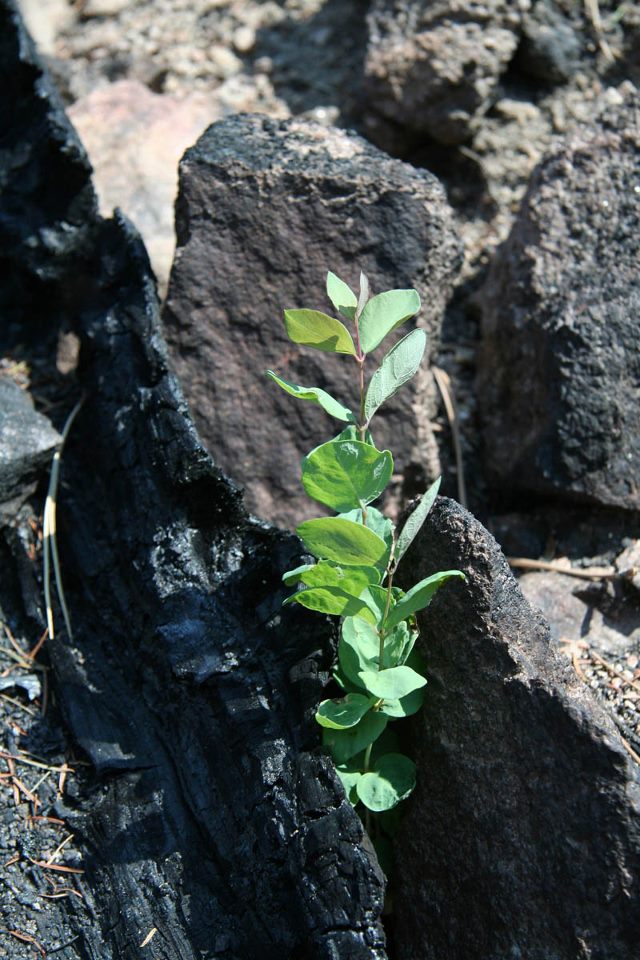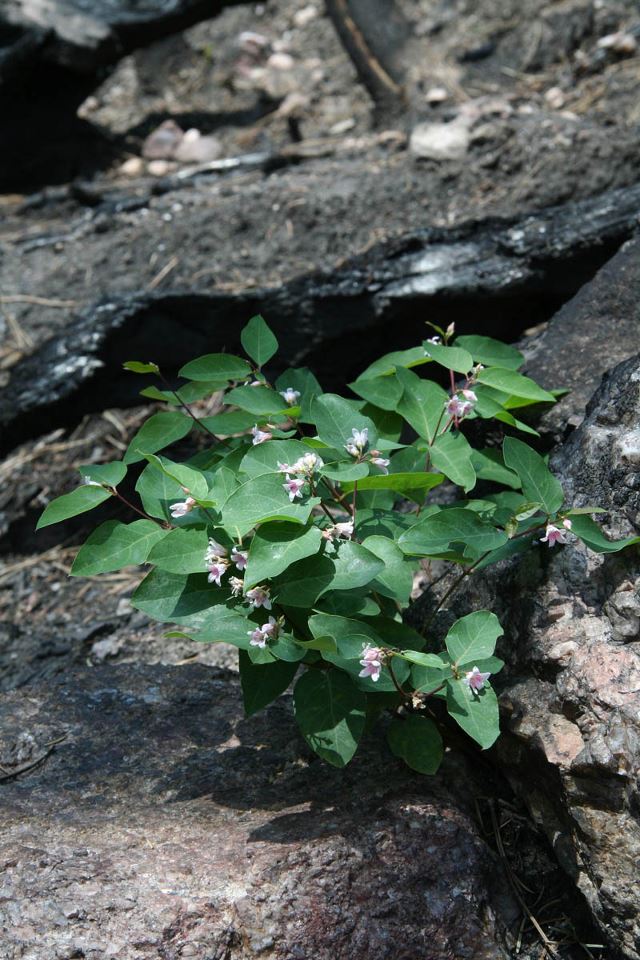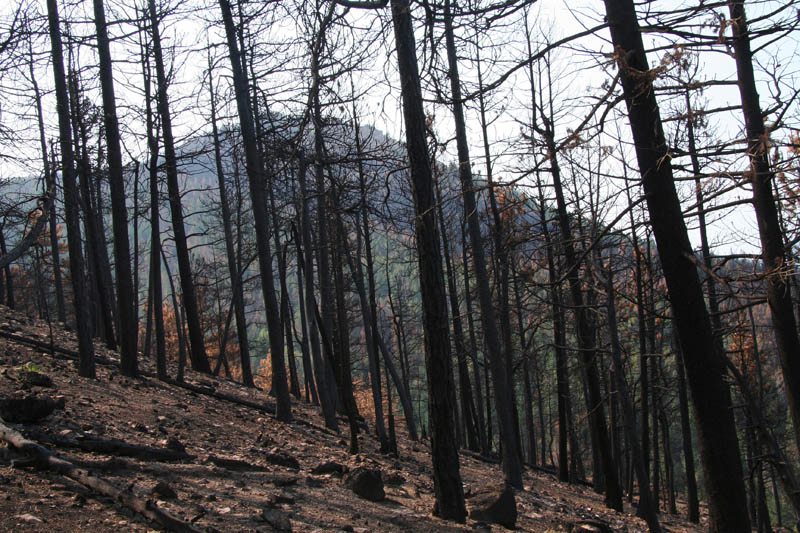I’m delighted to welcome guest blogger Dave Sutherland, who provides this peek at our local forest recovering from a recent fire. Dave is a naturalist interpreter with the City of Boulder Open Space and Mountain Parks, where the fire burned just outside city limits. Dave is also our go-to guy on native plants, leading the volunteer team of native plant gardeners at the Chautauqua Ranger Cottage. Here is Dave’s photo essay on the fire zone. Thank you, Dave!
Seven Weeks after the Flagstaff Fire
On June 26 the Flagstaff Fire burned 300 acres on Bear Peak, South Boulder Peak, and the top of Shadow Canyon. Seven weeks later, I got a special permit through my work at Boulder’s Open Space program to enter the fire zone, and I took my camera along. Here is what I found.
On my hike in, I passed through the forest adjacent to the burn. There were flowers, golden grasses of late summer, green trees. Compare this view to next photo, inside the burned forest.
In some places, the fire burned so hot that it reduced the landscape to bare rocky soil, leaving a scene that looked almost lunar—except for the charred remains of tree trunks.
But this next photo was taken adjacent to the previous one. These are tiny aspen shoots sprouting up to reclaim the forest after just seven weeks. As I’ve learned more about how ecosystems work, I’ve come to see that each natural disaster produces some winners and some losers. The aspens are going to be winners. Their deep roots were unharmed by the flames and heat, and true to their pioneer nature, they are wasting no time taking over. In the not-so-distant future, this lunar scape will have become a lush grove of aspens with fluttering leaves.
Brown pine needles had fallen from dead trees, covering the blackened ground with a golden blanket. Everywhere I looked through the scorched remains of the forest, I found signs of life returning.
Just seven weeks after the inferno, fireweed was able to resprout and bloom amid blackened rocks and tree trunks that were sprayed with retardant slurry. Many rocks and trees still bore the red splotches of retardant, dropped relentlessly by the slurry bombers.
Spreading dogbane had returned, and had even managed to produce flowers in many heavily burned areas. Butterflies were busy gathering nectar. In the stillness of the blackened trees, insects chirped, squirrels scolded me, grasshoppers made sudden whirring flights when they were startled. Occasionally I heard the skittering sound of a pine cone falling from some high branch.
And the birds were plentiful and active! Woodpeckers were everywhere, chipping the charred scales of bark off the trees as they searched for insects. They left little reddish patches of unburned bark exposed on the tree trunks. Nuthatches, robins, noisy Steller’s jays, and a pair of ravens explored the forest looking for opportunity. A Cooper’s hawk flew over, screaming.
Signs of the fire’s destructive power were awesome to see.
Where the flames were hottest, entire stumps vanished, leaving only holes in the soil to show where their roots had once been.
The fire didn’t burn with equal ferocity across the landscape. Some places were spared altogether. Others got singed or just got hot enough to injure but not kill the trees. Some places got totally nuked, like this charred stick forest at the top of Shadow Canyon.
Like other wildfires, this one left a patchwork mosaic of postfire conditions—a mosaic of possibilities and opportunities for species to return. Before the fire, the forest had become fairly uniform.
Now, nature has reshuffled the cards, and some species—like the aspens, which had been suppressed under the pines—will burst forth for their turn in the sun. By creating a patchy mosaic of conditions, natural “disasters” like this fire (or hurricanes, earthquakes, avalanches, rock slides, or even asteroid strikes) are actually engines that drive biodiversity.
Where the fire burned away all the surface vegetation, the soil is beginning to erode. Gullies cut through the the ash and gravel. The hiking trails have been heavily damaged by erosion. The upper Shadow Canyon trail, shown above, will require significant work before it can be reopened.
This is the saddle where Shadow Canyon trail joins the two trails to Bear Peak and South Boulder Peak. Somehow the directional signs survived. But the area is still so fragile it will be a while before it can sustain visitor traffic again. We’ll have to fell some of the dead trees that grew next to the trail, since they could become falling hazards. The trails will need extensive work. And the area is networked with fire line cut by the the crews who helped suppress the blaze. The fire lines look like trails, but hiking on them can cause severe damage to the land.
Douglas fir cones that survived the blaze, with their precious cargo of seeds intact, will help restore the forest.
Snowberry shoots poke up from a crack next to a charred tree trunk.
I was amazed by the contrast—appalling destruction alongside rebirth and rejuvenation after just seven weeks.
The burned trees will gradually fall and rot, chewed by insects, hollowed out by woodpeckers, each snag becoming home for many animals. In death, the trees will support an abundance of life.
The forest will return—changed, with a different mix of trees. Winners, losers in an endless cycle of change.

